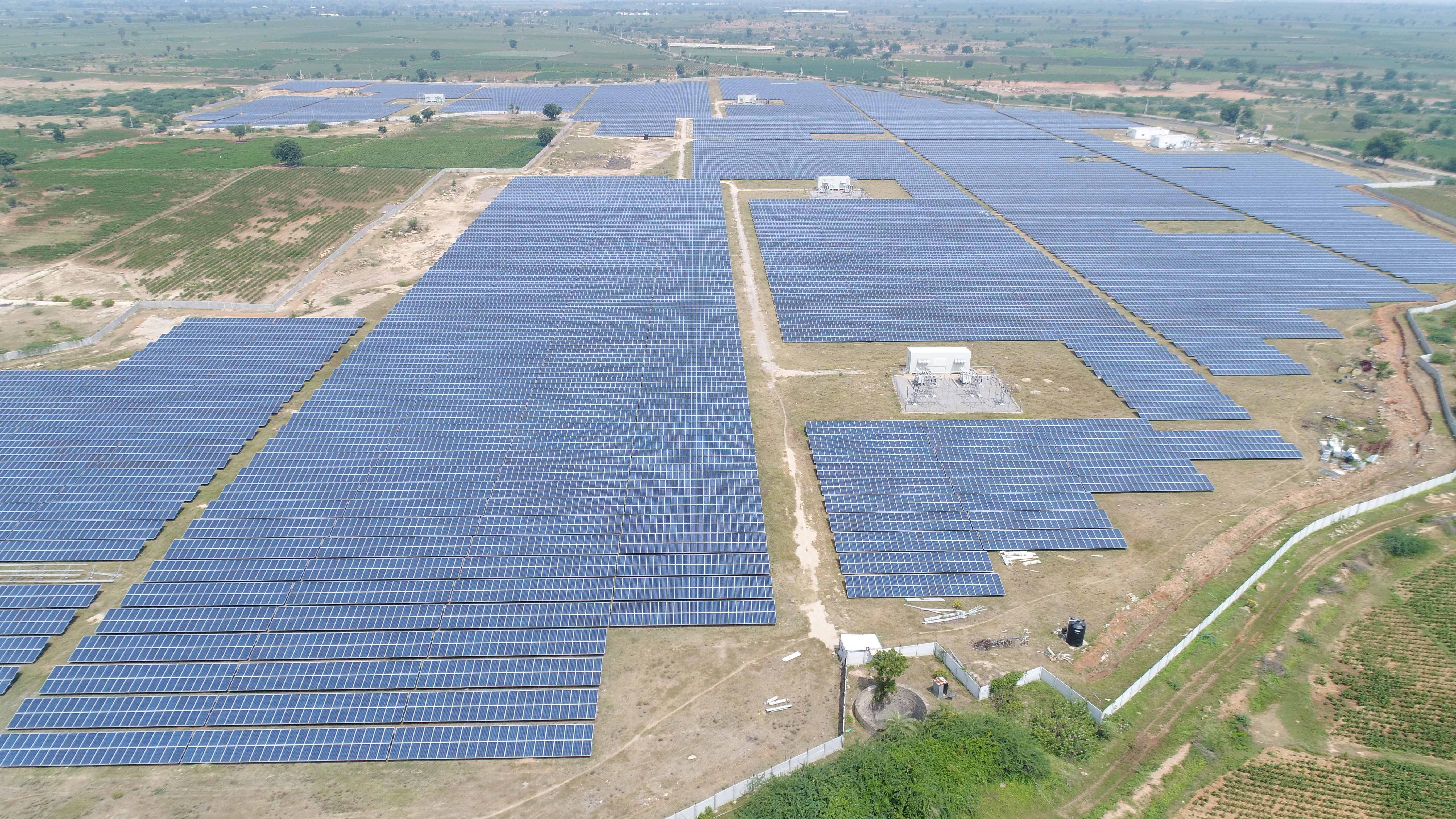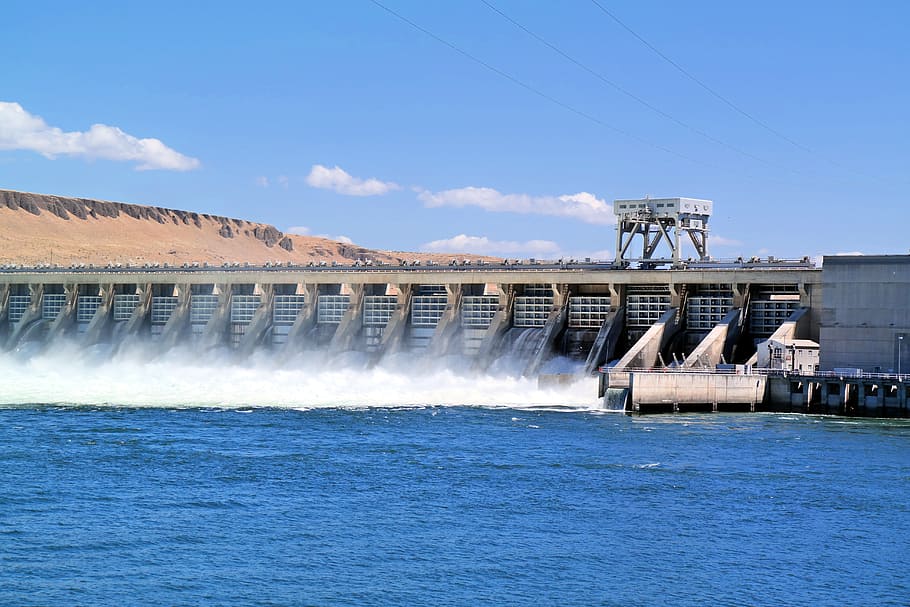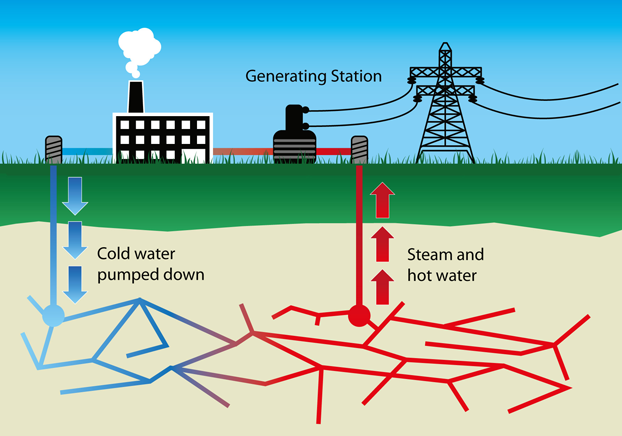What are Natural Resources?
Natural resources are naturally occurring materials or substances that are considered valuable or useful for human beings. They include both biotic (living) and abiotic (non-living) resources, such as air, water, soil, minerals, forests, wildlife, and fossil fuels.
Natural resources are critical for human survival and well-being, as they provide the raw materials for food, shelter, clothing, medicine, and energy production. Examples: Sunlight, Minerals.
Natural Resources can be classified into TWO categories:
- Renewable resources
- Non-Renewable resources
Renewable resources
Renewable resources can be replenished or regenerated over time, either through natural processes or human intervention. These resources are generally considered to be sustainable, as their availability is not limited by depletion or overuse.
Examples:- Air
- Water
- Sunlight
- Wind

Non-Renewable resources
Non-renewable resources are natural resources that are finite and cannot be replenished on a human timescale, or at least not without geological processes taking millions of years. These resources are generally considered to be unsustainable, as their supply will eventually be depleted.
Examples:- Oil
- Natural gas
- Coal
- Nuclear fuels

SOLAR ENERGY
- Solar energy is radiant light and heat from the sun harnessed using a range of ever-evolving technologies such as solar photovoltaic cells.
- The Sun is a powerful source of energy that provides the Earth with as much energy every hour as we collectively use in a year worldwide.
- Energy from the sun is harnessed in two ways:
- Active solar involves capturing and redistributing sunlight through the use of solar panels, pumps, or solar fans to generate power usually on a large scale.
- Passive solar works to reduce the amount of energy traditionally used to power a location, such as a building or a house. An example is building a house in the natural direction of sunlight to trap heat.

Advantages
Solar energy has several advantages, including:- Renewable: Solar energy is a renewable source of energy, meaning it can be harnessed without depleting natural resources or harming the environment.
- Environmentally friendly: Solar energy is a clean and green energy source that does not produce harmful emissions like greenhouse gases, which contribute to climate change.
- Low operating costs: Once installed, solar panels require little maintenance and have low operating costs, making them a cost-effective long-term investment.
- Energy independence: Solar energy can help reduce dependence on foreign energy sources, enhancing energy security and reducing geopolitical tensions.
- Job creation: The solar industry is a rapidly growing sector that creates new jobs and generates economic growth.
- Scalability: Solar energy systems can be scaled up or down to meet the energy needs of different communities, from small residential homes to large commercial buildings.
- Versatility: Solar energy can be used to power a variety of applications, including electricity generation, heating, and cooling.
- Reliability: Solar energy systems are reliable and can provide a consistent source of energy, even during power outages and emergencies.
Disadvantages
While solar energy has many advantages, it also has some disadvantages, including:- High upfront costs: The initial installation costs of a solar energy system can be high, although these costs have been decreasing over time.
- Weather-dependent: Solar energy production is dependent on weather conditions, and energy output can fluctuate depending on factors such as cloud cover and seasonal changes in sunlight.
- Land use: Large-scale solar energy projects can require significant land use, which can be a concern in densely populated areas or where land is at a premium.
- Energy storage: Solar energy is not always available when it is needed, and energy storage technology is still developing, which means that excess energy must be stored in batteries or fed back into the grid.
- Maintenance: Solar panels require regular cleaning and maintenance to ensure they continue to operate at maximum efficiency.
- Manufacturing emissions: The manufacturing process of solar panels can produce greenhouse gas emissions and other pollutants, although these emissions are generally lower than those produced by fossil fuels.
- Intermittency: Although solar energy is reliable, it is intermittent, meaning that it is not available 24/7, and backup systems may be needed to ensure a consistent power supply.
WIND ENERGY
- The Electrical energy that is obtained from harnessing the wind with windmills or wind turbines is called Wind Energy.
- Winds are caused by the uneven heating of the atmosphere by the sun, the irregularities of the earth's surface, and the rotation of the earth.
- Wind turbines convert the kinetic energy in the wind into mechanical power.
- Large wind farms consist of hundreds of individual wind turbines which are connected to the electric power transmission network.

Advantages
Wind energy has several advantages, including:
- Renewable: Wind energy is a renewable source of energy, meaning it can be harnessed without depleting natural resources or harming the environment.
- Environmentally friendly: Wind energy is a clean and green energy source that does not produce harmful emissions like greenhouse gases, which contribute to climate change.
- Low operating costs: Once installed, wind turbines require little maintenance and have low operating costs, making them a cost-effective long-term investment.
- Energy independence: Wind energy can help reduce dependence on foreign energy sources, enhancing energy security and reducing geopolitical tensions.
- Job creation: The wind industry is a rapidly growing sector that creates new jobs and generates economic growth.
- Scalability: Wind energy systems can be scaled up or down to meet the energy needs of different communities, from small residential homes to large commercial buildings.
- Versatility: Wind energy can be used to power a variety of applications, including electricity generation, heating, and cooling.
- Reliability: Wind energy systems are reliable and can provide a consistent source of energy, even during power outages and emergencies.
- Land use: Wind turbines can be installed on land or offshore, making them a versatile energy option that can be adapted to different environments.
Disadvantages
While wind energy has many advantages, it also has some disadvantages, including:
- Weather-dependent: Wind energy production is dependent on weather conditions, and energy output can fluctuate depending on factors such as wind speed and direction.
- Noise pollution: Wind turbines can produce noise pollution, which can be a concern for nearby residents and wildlife.
- Visual impact: Wind turbines can be large and visible from a distance, which can have visual impacts on the surrounding landscape and views.
- Bird and bat fatalities: Wind turbines can be a hazard for birds and bats, which can collide with the blades and suffer fatalities.
- Land use: Large-scale wind energy projects can require significant land use, which can be a concern in densely populated areas or where land is at a premium.
- Upfront costs: The initial installation costs of wind turbines can be high, although these costs have been decreasing over time.
- Intermittency: Although wind energy is reliable, it is intermittent, meaning that it is not available 24/7, and backup systems may be needed to ensure a consistent power supply.
HYDROPOWER
- Hydropower is the energy derived from falling water or running water.
- Falling water is channeled through water turbines.
- The pressure of the flowing water on the turbine blades rotates a shaft and drives an electrical generator, converting the motion into electrical energy.
- But hydroelectric power doesn't necessarily require a large dam. Some hydroelectric power plants just use a small canal to channel the river water through a turbine.

Advantages
Hydropower has several advantages, including:
- Renewable: Hydropower is a renewable source of energy, meaning it can be harnessed without depleting natural resources or harming the environment.
- Environmentally friendly: Hydropower is a clean and green energy source that does not produce harmful emissions like greenhouse gases, which contribute to climate change.
- Reliable: Hydropower is a reliable source of energy that can provide a consistent source of energy, even during periods of high demand.
- Energy storage: Hydropower plants can store water in reservoirs, allowing for energy to be generated when it is needed, even during times of low water flow.
- Flexibility: Hydropower can be easily scaled up or down to meet changing energy needs, from small hydroelectric plants to large-scale power plants.
- Water management: Hydropower plants can help manage water resources by regulating water flows, controlling floods, and providing irrigation for agriculture.
- Job creation: The hydropower industry creates jobs and generates economic growth, particularly in rural areas.
- Low operating costs: Once installed, hydropower plants have low operating costs, making them a cost-effective long-term investment.
Disadvantages
While hydropower has many advantages, it also has some disadvantages, including:
- Environmental impact: Large-scale hydropower projects can have significant impacts on the environment, including altering water flows, affecting aquatic habitats, and disrupting natural river ecosystems.
- Land use: Hydropower plants can require significant land use, which can be a concern in densely populated areas or where land is at a premium.
- Upfront costs: The initial installation costs of hydropower plants can be high, although these costs have been decreasing over time.
- Weather-dependent: Hydropower production is dependent on weather conditions, and energy output can fluctuate depending on factors such as rainfall and snowmelt.
- Social impacts: Large-scale hydropower projects can have social impacts on local communities, including the displacement of indigenous peoples and the loss of cultural heritage.
- Maintenance: Hydropower plants require regular maintenance and repair to ensure they continue to operate at maximum efficiency.
- Safety concerns: Hydropower plants can be hazardous to operate, and there is a risk of dam failure or other accidents.
GEOTHERMAL ENERGY
- Geothermal energy is thermal energy generated and stored in the Earth.
- Thermal energy is the energy that determines the temperature of matter.
- The geothermal energy of the Earth's crust originates from the original formation of the planet (20%) and from the radioactive decay of minerals (80%).
- The geothermal gradient, which is the difference in temperature between the core of the planet and its surface, drives a continuous conduction of thermal energy in the form of heat from the core to the surface.
- Resources of geothermal energy range from shallow ground to hot water and hot rock found a few miles beneath the Earth's surface, and down even deeper to the extremely high temperatures of molten rock called magma.

Advantages
Geothermal energy has several advantages, including:
- Renewable: Geothermal energy is a renewable source of energy, meaning it can be harnessed without depleting natural resources or harming the environment.
- Environmentally friendly: Geothermal energy is a clean and green energy source that does not produce harmful emissions like greenhouse gases, which contribute to climate change.
- Reliable: Geothermal energy is a reliable source of energy that can provide a consistent source of energy, even during periods of high demand.
- Energy efficiency: Geothermal systems can be up to 400% more efficient than traditional heating and cooling systems, resulting in lower energy costs.
- Low operating costs: Once installed, geothermal systems have low operating costs, making them a cost-effective long-term investment.
- Versatility: Geothermal energy can be used for a variety of applications, including electricity generation, heating, and cooling.
- Scalability: Geothermal systems can be scaled up or down to meet the energy needs of different communities, from small residential homes to large commercial buildings.
- Minimal land use: Geothermal energy does not require significant land use and can be used in urban areas and densely populated regions.
Disadvantages
While geothermal energy has many advantages, it also has some disadvantages, including:
- Location-specific: Geothermal energy resources are only available in certain locations, making them difficult to access in some areas.
- High upfront costs: The initial installation costs of geothermal systems can be high, although these costs have been decreasing over time.
- Environmental impact: Geothermal energy projects can have environmental impacts, including the release of gases and chemicals during drilling and the potential for seismic activity.
- Limited scalability: Geothermal energy production is limited by the size and accessibility of the geothermal resource, which can make it difficult to scale up for larger energy demands.
- Maintenance: Geothermal systems require regular maintenance and repair to ensure they continue to operate at maximum efficiency.
- Resource depletion: Overuse of geothermal resources can lead to depletion and a decrease in energy production over time.
- Water use: Geothermal power plants require significant amounts of water for cooling, which can be a concern in areas with limited water resources.



0 Comments
Thank You!
Your response has been recorded.